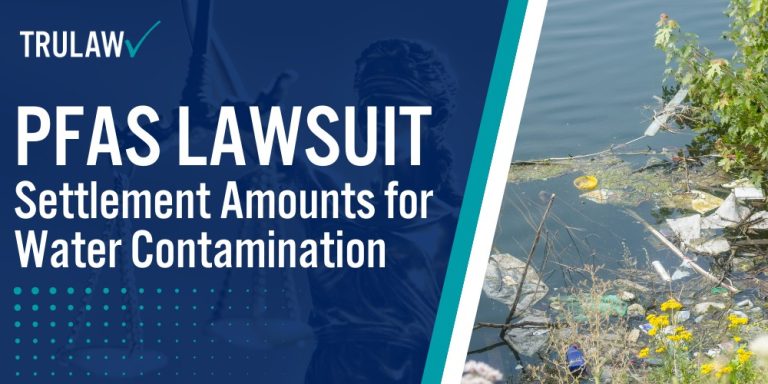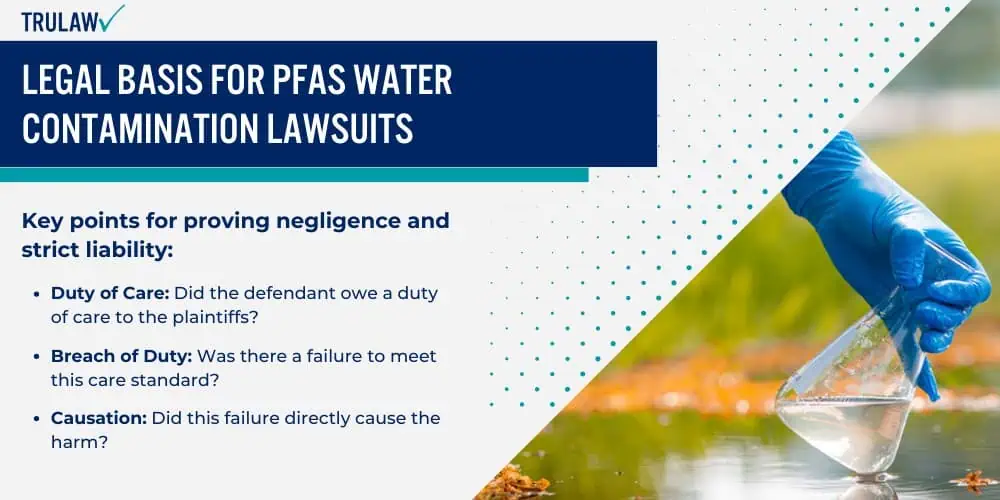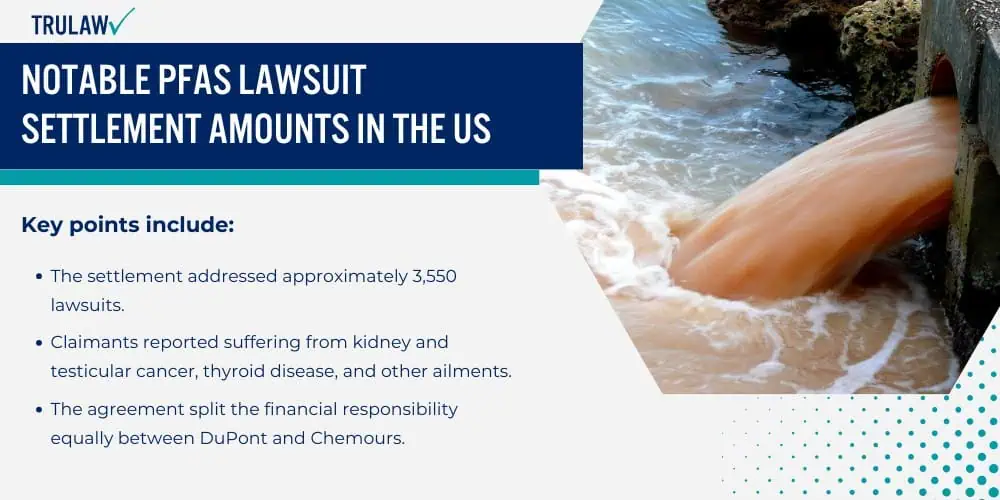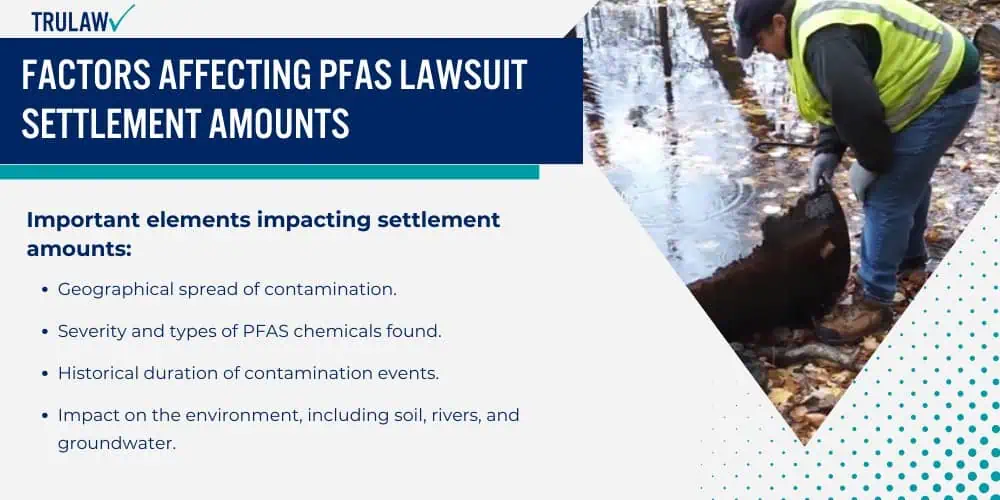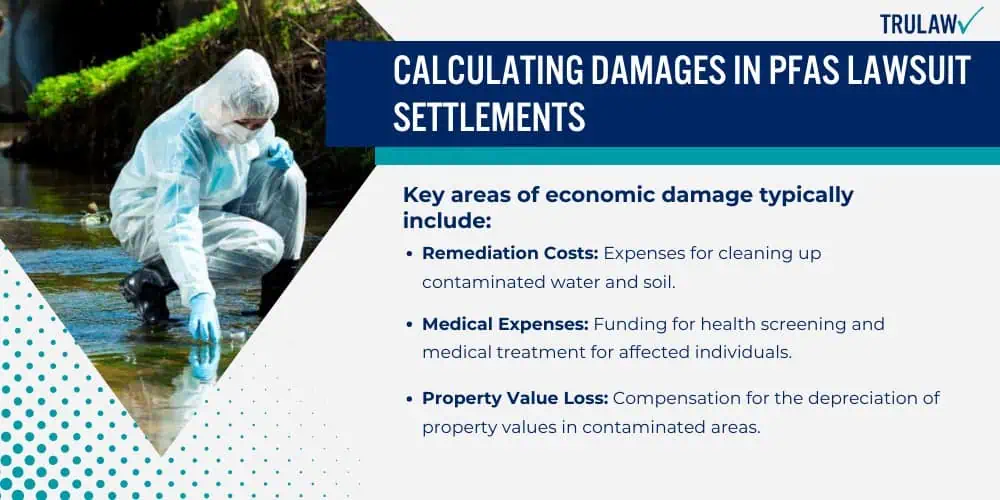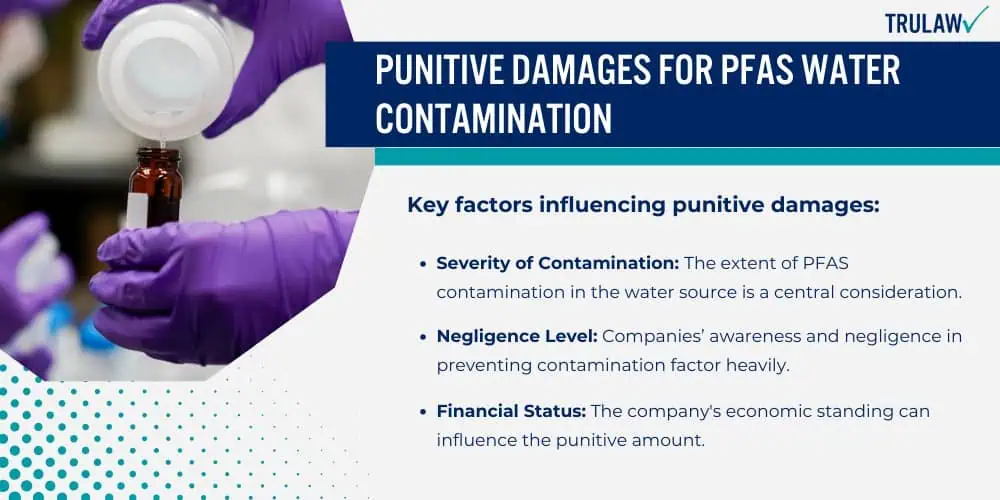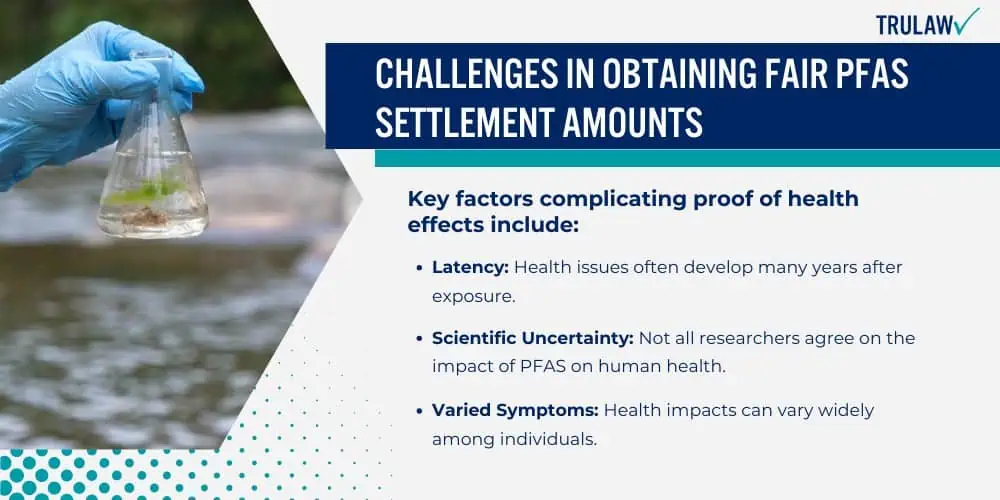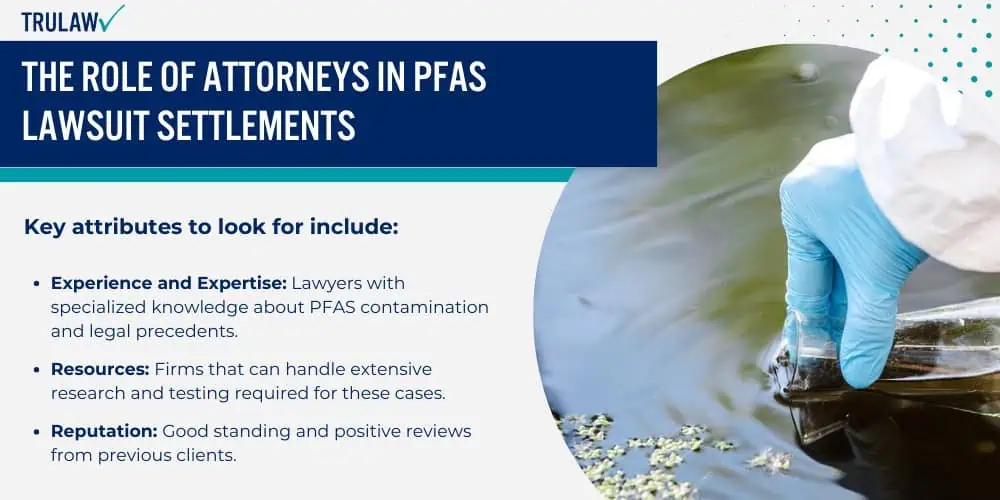PFAS chemicals, also known as “forever chemicals,” have been linked to various health concerns due to their persistence in the environment and ability to accumulate in drinking water sources.
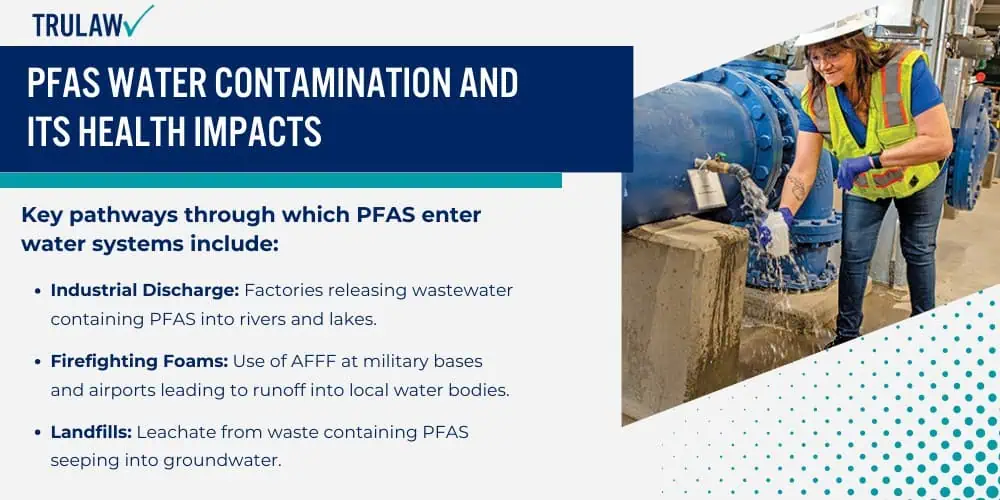
PFAS settlements may provide military-members, firefighters and surrounding communities affected by PFAS exposure an opportunity to recover damages for serious health conditions, such as kidney and liver cancer.
These settlements often address the environmental and health impacts of per- and polyfluoroalkyl substances (PFAS).
This section explores how specific PFAS chemicals infiltrate water sources and the resulting potential health risks.
How PFAS Chemicals Contaminate Water Sources
PFAS contamination in water sources often originates from industrial operations, firefighting aqueous film-forming foam (AFFF), and consumer products.
These substances are resistant to breaking down, making them highly persistent in the environment and hence referred to as “forever chemicals.“
Key pathways through which PFAS enter water systems include:
- Industrial Discharge: Factories releasing wastewater containing PFAS into rivers and lakes.
- Firefighting Foams: Use of AFFF at military bases and airports leading to runoff into local water bodies.
- Landfills: Leachate from waste containing PFAS seeping into groundwater.
- Agricultural Applications: Biosolids and fertilizers containing PFAS spread on fields, leading to runoff into adjacent water.
Consequences of PFAS Water Contamination
PFAS lawsuits typically result from contamination caused by chemicals that do not degrade over time.
These settlements aim to relieve impacted communities and fund the cleanup of polluted water systems.
Notable consequences include:
- PFAS concentrations can persist in water systems for years.
- Regular monitoring is necessary to detect PFAS contamination and protect public health.
- PFAS pollution poses significant remediation challenges due to the stability of the chemicals.
Potential Health Risks Associated with PFAS Exposure
Exposure to PFAS-contaminated drinking water has been associated with several adverse health effects.
Potential health risks include, but are not limited to:
- Increased Cancer Risk: Links to kidney, breast, pancreas, prostate, and testicular cancers.
- Liver Damage: High PFAS concentrations can lead to liver enzyme alterations.
- Developmental Effects: Decreased birth weight and increased incidence of birth defects.
- Immune System Impacts: Reduced vaccine efficacy and increased susceptibility to infections.
- Metabolic Disorders: High cholesterol levels and an increased risk of diabetes.
- Reproductive Issues: Infertility and other reproductive health concerns.
Addressing Health Risks of PFAS Water Contamination
These settlements often involve large corporations, public health advocacy groups, and legal actions to ensure fair compensation and effective cleanup measures.
Addressing these health risks involves:
- Implementing guidelines for safe PFAS levels in drinking water.
- Pursuing legal actions against polluting entities with the help of PFAS water contamination lawyers.
- Ensure community education on the potential dangers of toxic PFAS chemicals and promote transparency in water testing results.
Understanding and mitigating PFAS water contamination remain critical for protecting public health and ensuring safe drinking water.
